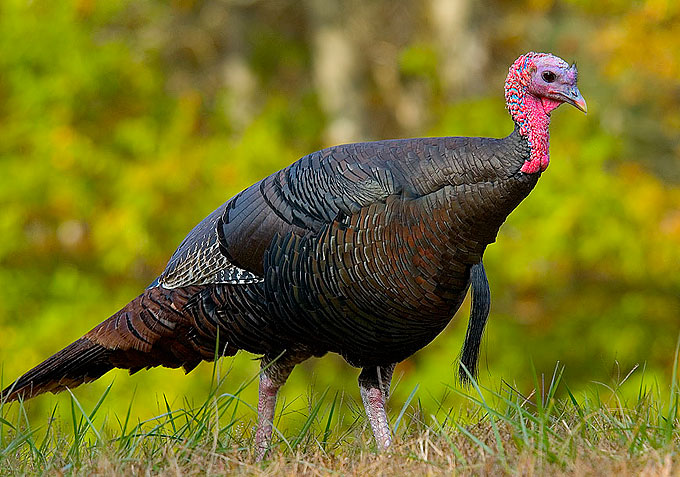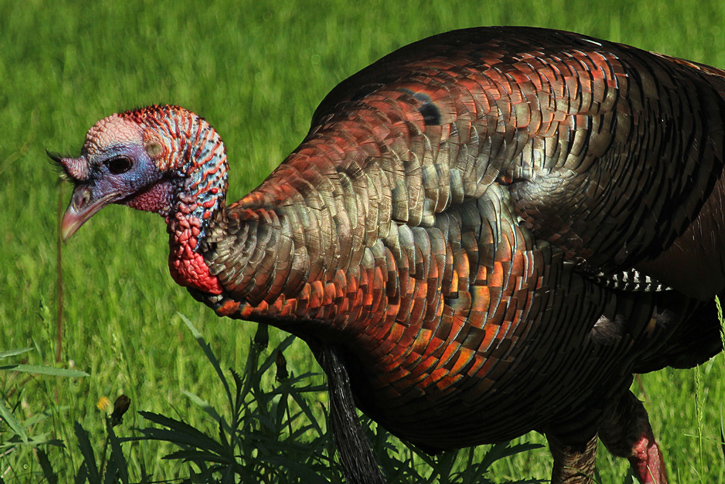Though they have a reputation for being thoughtless, turkeys are actually quite intelligent animals. Below we have a list of 20 interesting and fun facts that we found about these strange animals.
1. A wild turkey, Meleagris gallopavo, can actually fly at speeds of 55 miles per hour. However, only wild turkeys are able to fly as the domestic turkey is bred to be large and is too heavy to lift itself off the ground.
2. Turkeys aren’t just big chickens, in fact, there is more than 45 million years of evolution that separates the two species.
3. The wild turkey was almost hunted to extinction in the early 1900s, when the population reached a low of 30,000 birds.
4. There are about six subspecies of wild turkey, all of which are native to North America.
5. The pilgrims hunted and ate the eastern wild turkey, M. gallopavo silvestris, which today has a wide range that covers everything from the eastern half of the United States into Canada.
6. The eastern wild turkey is sometimes called the forest turkey and it has the biggest population of all the turkey subspecies, numbering in more than 5 million.
7. The Aztecs domesticated the south Mexican wild turkey, M. gallopavo gallopavo, and the Spanish brought those turkeys to Europe.

8. Male turkeys are called “gobblers” because they use the “gobble” call to announce themselves to females.
9. Like chickens, female turkeys are called hens.
10. An adult gobbler weighs 16 to 22 pounds on average, has a beard of modified feathers on his breast that’s about 7 inches long, and it has sharp spurs on its legs for fighting.
11. A hen is much smaller, weighing around 8 to 12 pounds, and has no beard or spurs.
12. Both genders of turkey have a “snood”, which is the dangly appendage on the face, a “wattle,” the red dangly bit under their chins,” and only a few feathers on their head.
13. A turkey’s gender can be determined from its droppings. Males produce spiral shaped feces while females have feces in the shape of the letter “J.”
14. In 1997, a study in the Journal of Avian Biology found that female turkeys prefer males with long snoods and that snood length can be used to predict the winner of a competition between two male turkeys.

15. A group of male turkeys that are related will band together to find females, even though only one member will get to mate.
16. Turkeys can run up to 25 miles per hour.
17. When a hen is ready to make offspring, she’ll lay about 10 to 12 eggs, one egg per day, over a period of two weeks. The eggs will incubate for 28 days before they hatch.
18. Baby turkeys are called “poults”.
19. Poults eat berries, seeds and insects, while adult turkeys have a more varied diet that can include acorn and small reptiles.
20. The ocellated turkey, Meleagris ocellata, can be found on the Yucatan Peninsula in Mexico.



